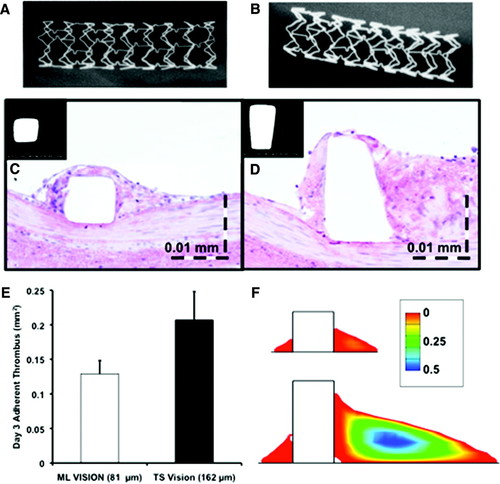Kolandaivelu, K., et al. Stent thrombogenicity early in high-risk interventional settings is driven by stent design and deployment and protected by polymer-drug coatings.
Summary: Contrary to popular perception, drug/polymer coatings do not inherently increase acute stent clotting; they reduce thrombosis. However, strut dimensions and positioning relative to the vessel wall are critical factors in modulating stent thrombogenicity. Optimal stent geometries and surfaces, as demonstrated with thin stent struts, help reduce the potential for thrombosis despite complex stent configurations and variability in deployment.

In vivo thrombogenicity of thin (MULTI-LINK VISION [MLV]) and thick (thick-strut VISION [TSV]) bare metal stents in porcine coronary arteries (n=6 each). A and B, Radiographs of the excised arteries confirming full expansion of the MLV and TSV platforms, respectively. C and D, Hematoxylin and eosin staining of prepared sections derived from MLV and TSV devices, respectively, 3 days after implantation. E, Morphometric analysis of adherent thrombus as assessed through luminal area measurement of MLV- and TSV-stented sections. F, Computational models depicting flow alterations surrounding apposed thin (81×81 μm2) and thick (162×81 μm2) struts; color scale provided in cm/sec.
Circulation, 2011. 123(13): p. 1400-9.

